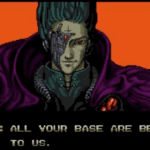Now Reading: Epic RPG Showdown: Final Fantasy VS Dragon Quest
-
01
Epic RPG Showdown: Final Fantasy VS Dragon Quest
Epic RPG Showdown: Final Fantasy VS Dragon Quest

Introduction
When it comes to Final Fantasy vs Dragon Quest, both are legendary role-playing game franchises that have shaped the gaming world. These two series started in Japan during the 1980s and played a huge role in making RPGs popular.
Although Final Fantasy and Dragon Quest share similarities as classic JRPGs, they have clear differences in gameplay, storytelling, art, and overall style. Final Fantasy is known for reinventing itself with each game, while Dragon Quest sticks to its traditional RPG roots.
In this article, we’ll break down how these two iconic franchises compare in their history, gameplay, story styles, and lasting influence. While Final Fantasy often takes bold risks and pushes boundaries, Dragon Quest focuses on perfecting a tried-and-true formula. Despite their differences, both have made major contributions to the RPG genre.
History and Origins
Final Fantasy vs Dragon Quest both emerged in the 1980s and have since become two of the most beloved RPG franchises in the world. Despite their similarities, their origins reveal two distinct visions for what an RPG could be.
Final Fantasy was the brainchild of Hironobu Sakaguchi, developed by Square Co., Ltd. (now Square Enix), and released in 1987 for the Nintendo Entertainment System (NES). Interestingly, Sakaguchi named it “Final Fantasy” because he thought it might be his last game before leaving the industry. However, the game’s massive success turned what was intended as a final project into the start of a sprawling series that would span decades, pushing the boundaries of RPGs with each new installment.
On the other hand, Dragon Quest was created by Yuji Horii and developed by Chunsoft (now also part of Square Enix), with its first release in 1986, just a year before Final Fantasy. Horii’s inspiration came from classic western RPGs like Wizardry and Ultima, but his goal was to make an RPG that could appeal to a broader Japanese audience. To achieve this, Dragon Quest focused on simplicity, charm, and a more accessible design. Its straightforward gameplay, combined with Akira Toriyama’s iconic art, made it an instant hit in Japan.
Both games were born in the 8-bit era, during a time when the RPG genre was still developing, and they played pivotal roles in shaping it. While Final Fantasy leaned toward a mix of fantasy and science fiction, Dragon Quest embraced a more traditional medieval setting, setting the tone for future games in each series. These different approaches helped both franchises carve out unique identities, solidifying their places in gaming history.
Story and Setting
Final Fantasy vs Dragon Quest take distinct paths in storytelling and worldbuilding, offering players unique experiences that cater to different tastes.
In Final Fantasy, the narratives tend to be deep and complex, often involving political intrigue, factions battling for power, and world-saving stakes. These games aren’t afraid to dive into heavier themes like destiny, rebellion, and philosophical questions about life and existence. The settings are vast and varied, ranging from medieval kingdoms to futuristic dystopias. Each game introduces entirely new characters and worlds, with only a few recurring motifs—like chocobos or crystals—tying them together. This constant reinvention makes Final Fantasy feel fresh and unpredictable with every installment.
- Final Fantasy Tactics: A complex plot involving political scheming, betrayal, and war in the kingdom of Ivalice.
- Final Fantasy VII: Themes of corporate greed and environmental destruction, with a focus on personal identity and existentialism.
- Final Fantasy X: Explores the nature of faith, sacrifice, and resisting one’s predetermined fate, set in the world of Spira.
- Final Fantasy VI: Blends steampunk with fantasy in a world dominated by an evil empire, with characters rebelling against tyranny.
Dragon Quest, on the other hand, takes a simpler, more classic approach to storytelling. Its plotlines are often centered around the timeless battle of good versus evil, with a hero setting out on a quest to defeat dark forces. The tone is lighter, with a charming sense of humor and whimsy throughout. The world of Dragon Quest stays true to traditional fantasy—castles, villages, dungeons, and magical creatures like dragons and slimes. While each game features different characters and worlds, there are many familiar elements that recur throughout the series, creating a comforting sense of continuity for fans.
- Dragon Quest III: A traditional hero’s journey to defeat an evil archfiend, considered a genre-defining RPG.
- Dragon Quest XI: The story of the Luminary, a chosen hero destined to save the world, wrapped in humor and warmth.
- Dragon Quest VIII: Combines classic swords-and-sorcery fantasy with Akira Toriyama’s iconic art style, creating a charming adventure.
In summary, Final Fantasy offers more intricate, movie-like stories that explore deep themes, while Dragon Quest sticks to a more straightforward, classic RPG style with lighthearted charm. Both styles have their appeal, attracting different types of players—those who crave epic, thought-provoking sagas, and those who prefer a more traditional and cheerful adventure.
Gameplay Mechanics
Both Final Fantasy vs Dragon Quest are known for their turn-based combat and focus on character growth, but they approach these systems in different ways.
In Final Fantasy, combat often features the Active Time Battle (ATB) system, where characters act based on a time gauge that fills up in real-time, creating a sense of urgency and strategic decision-making. Examples include:
- Final Fantasy IV: One of the first games to use the ATB system, making battles feel more dynamic.
- Final Fantasy VII: Expanded on the ATB system with real-time tension and limit breaks, rewarding strategic timing.
Dragon Quest, by contrast, sticks to a more traditional turn-based combat system, where characters act in a set order based on their agility. Some examples include:
- Dragon Quest XI: Retains the classic turn-based structure while adding more modern flourishes like free-form camera movement.
- Dragon Quest VIII: Keeps combat simple but strategic, focusing on knowing when to attack or defend.
When it comes to character progression, Dragon Quest has a simpler class system, making it easy to jump into. Final Fantasy, however, provides deeper customization through job systems and skill trees. Examples include:
- Final Fantasy V: Famous for its job system, allowing players to switch between classes and create unique character builds.
- Final Fantasy X: Introduces the Sphere Grid, a complex leveling system that allows for character growth in many directions.
Exploration also differs between the two franchises:
- Final Fantasy: Encourages open-world exploration, with hidden items, secret areas, and non-linear paths, as seen in games like Final Fantasy XV and Final Fantasy XII.
- Dragon Quest: Follows a more linear progression, guiding players through a set journey with clear goals, though there are still side quests and hidden treasures to find, as in Dragon Quest IX.
Music and Audio
The music in both Final Fantasy and Dragon Quest has become legendary, with memorable scores that define the atmosphere and emotional tone of each game. Both series feature iconic compositions by some of the most renowned video game composers, making their soundtracks a vital part of the gaming experience.
Final Fantasy’s music has been primarily composed by Nobuo Uematsu since the very first game in 1987. His lush, orchestral soundtracks are instantly recognizable, creating sweeping, emotive melodies that enhance the storytelling. Key examples include:
- “Prelude”: A dramatic arpeggio that opens nearly every Final Fantasy game, setting a mystical and grand tone.
- “Victory Fanfare”: A triumphant tune that plays after winning battles, which has become one of the most iconic pieces in gaming.
- “One-Winged Angel” (Final Fantasy VII): A standout track that blends orchestral and rock elements, adding intensity to one of the series’ most famous battles.
In contrast, Dragon Quest’s music has been composed by Koichi Sugiyama since the series began in 1986. Sugiyama’s scores are known for their symphonic, classical style, often performed by real orchestras. The music brings an epic, grandiose feel to the games, with examples like:
- “Overture”: The uplifting and heroic main theme that opens every Dragon Quest game, instantly recognized by fans.
- “Level Up” jingle: A cheerful, rewarding tune that plays whenever a character levels up, adding a sense of accomplishment.
- Dragon Quest VIII’s Symphonic Suite: This game’s soundtrack features fully orchestrated versions of the music, adding a rich, cinematic layer to the gameplay.
Art and Graphical Style
Both Final Fantasy and Dragon Quest have developed unique visual styles that have evolved with advancements in technology, but they remain true to their roots in distinct ways.
Final Fantasy started with a medieval fantasy aesthetic, brought to life by Yoshitaka Amano‘s ethereal and otherworldly character designs. Amano’s artwork, known for its delicate, dream-like quality, shaped the visual identity of the early games. As technology progressed, the series embraced cutting-edge graphics:
- Final Fantasy VII: Marked a major shift with its 3D polygonal graphics, bringing the characters and world to life in a new way while maintaining its fantastical atmosphere.
- Final Fantasy X: Introduced voice acting and detailed facial animations, making characters more expressive and engaging.
- Final Fantasy XV: Took it a step further with photorealistic characters and environments, showcasing vast, open-world landscapes and detailed character models, blending fantasy with realism.
Meanwhile, Dragon Quest has consistently stayed true to the manga-inspired art style of Akira Toriyama, the creator of Dragon Ball. Toriyama’s bold, clean lines and vibrant character designs have become synonymous with the series:
- Dragon Quest VIII: The transition to 3D retained the anime-like aesthetic, with its cel-shaded graphics giving the game a storybook feel.
- Dragon Quest XI: Maintained the series’ signature charm while taking full advantage of modern hardware, using cel-shading to stay faithful to its classic look while delivering high-definition visuals.
Final Fantasy is known for pushing technological boundaries with photorealistic environments, intricate character designs, and groundbreaking graphical advances.
Dragon Quest sticks to its anime-inspired roots, with Toriyama’s art style evolving through the years but always maintaining its whimsical, colorful charm.
Major Games and Spinoffs
The Final Fantasy series is known for its numbered mainline entries that make up the core of the franchise. Some of the most notable flagship titles include:
- Final Fantasy VII – Considered a landmark JRPG that helped popularize the genre outside of Japan. Features Cloud Strife and an unforgettable story set in a cyberpunk world.
- Final Fantasy X – The first Final Fantasy title on PlayStation 2. Notable for its progression to 3D graphics, voice acting, and immersive world of Spira.
- Final Fantasy XV – A recent entry that garnered lots of hype as a long-in-development title. Features an open world and real-time action combat system.
When it comes to spinoffs, Final Fantasy has seen numerous offshoot games and subseries outside the mainline entries. Examples include:
- Final Fantasy Tactics – A tactical RPG spinoff with an intricate story centered around political turmoil.
- Dissidia Final Fantasy – A fighting game spinoff featuring an all-star cast of characters from the series.
- Final Fantasy Crystal Chronicles – An action RPG series designed for local multiplayer.
The Dragon Quest series also has a core set of mainline entries, usually just numbered sequentially. Some of the most popular include:
- Dragon Quest III – Introduced the class system and allowed players to create their own party members. Often cited as a genre classic.
- Dragon Quest VIII – The first Dragon Quest brought into 3D on the PlayStation 2. Notable for its immersive world, voice acting, and cel-shaded graphics.
- Dragon Quest XI – The latest mainline entry and first numbered Dragon Quest of the modern HD era. Features skill trees and horse riding.
In terms of spinoffs, the Dragon Quest series has branched out in various directions:
- Dragon Quest Monsters – A Pokémon-style monster collecting and battling spinoff.
- Dragon Quest Heroes – A Dynasty Warriors style action spinoff featuring slashing through hordes of enemies.
- Dragon Quest Builders – A sandbox game inspired by Minecraft with quests and a story mode.
Both Final Fantasy and Dragon Quest have produced their share of mainline entries and spinoffs that expanded each series in different directions while retaining the core essence and appeal of each franchise.
Popularity and Reception
The Final Fantasy series has achieved enormous commercial success on a global scale. Many entries have sold over 5 million copies worldwide, with Final Fantasy VII standing out as one of the best-selling games of all time, surpassing 10 million units sold. The series consistently receives praise from critics for its memorable storytelling, breathtaking visuals, and iconic soundtracks. Games like Final Fantasy VI, Final Fantasy X, and Final Fantasy XIV have been lauded for pushing the boundaries of the RPG genre and delivering unforgettable experiences.
On the other hand, while Dragon Quest may not have the same global reach, it is a cultural phenomenon in Japan. Every mainline Dragon Quest game has sold over 4 million copies in Japan alone, with some releases even leading to national excitement on launch day. The series is widely credited with popularizing the JRPG genre in Japan and influencing countless other games. Despite being less prominent globally, Dragon Quest is highly regarded for its classic, refined gameplay, charming characters, and retro-inspired visuals that maintain the series’ nostalgic appeal.
- Final Fantasy enjoys broader global popularity, with high sales and critical acclaim for its innovative approach to RPGs.
- Dragon Quest is a national treasure in Japan, shaping the JRPG genre and maintaining a strong fan base with its timeless gameplay and design.
Legacy, Influence, and Final Analysis
Both Final Fantasy and Dragon Quest have made a lasting impact on the RPG genre, shaping how role-playing games are played and developed. Despite their differences, both franchises have set standards for storytelling, gameplay mechanics, and innovation in gaming. Here’s a breakdown of their individual legacies and what makes each series stand out:
Final Fantasy’s Innovations:
- Introduced the Active Time Battle (ATB) system, blending turn-based strategy with real-time action.
- Pioneered cinematic storytelling with cutscenes, intricate plots, and emotional depth (e.g., Final Fantasy VII and Final Fantasy VI).
- Constantly reinvents itself in terms of visual style and gameplay, keeping the series fresh and innovative.
- Final Fantasy XV pushed graphical boundaries with photorealistic environments and open-world exploration.
Dragon Quest’s Timeless Appeal:
- Established the traditional JRPG formula, with turn-based combat and straightforward storytelling.
- Emphasizes classic gameplay mechanics like leveling up, exploring dungeons, and collecting items, providing a familiar yet refined experience.
- Iconic, recurring elements, such as the Slime monsters, Overture theme, and level-up jingles, create a sense of continuity.
- Maintains a lighthearted tone with humor, heartwarming moments, and traditional fantasy settings that appeal to a wide audience.
Final Analysis of Both Series
- Final Fantasy:
- Final Fantasy is the series for those who love innovation and variety. Each entry feels different, offering new ways to experience RPGs. Whether it’s through complex narratives, experimental combat systems, or cutting-edge graphics, Final Fantasy is always pushing the boundaries of what an RPG can be. It’s perfect for players who want to explore vast, evolving worlds and experience deep, emotional storytelling.
- Dragon Quest:
- Dragon Quest is the franchise for those who value tradition and consistency. It offers a classic JRPG experience with a focus on simple, accessible gameplay and a charming, whimsical world. Its lighthearted tone and familiar mechanics make it a comforting series, perfect for players who love the straightforward adventure of a hero saving the world, without losing the depth that comes from years of refining the core RPG formula.
In the end, both Final Fantasy vs Dragon Quest have cemented themselves as pillars of the RPG genre, each excelling in its own way. While Final Fantasy is known for reinventing itself with each installment, Dragon Quest sticks to its tried-and-true formula, refining it to near perfection. Whether you prefer groundbreaking innovation or timeless tradition, both series offer engaging, polished RPG experiences that continue to shape the genre for future generations.























